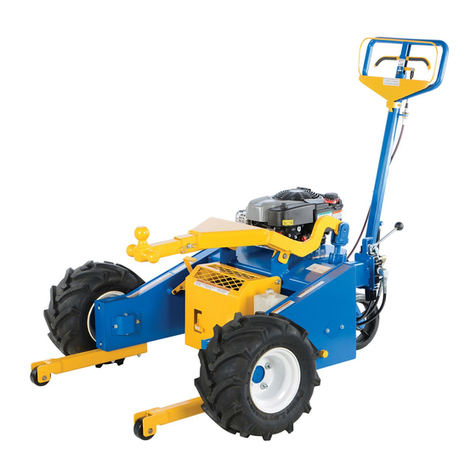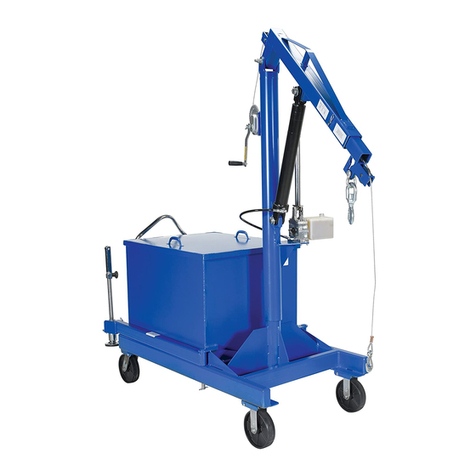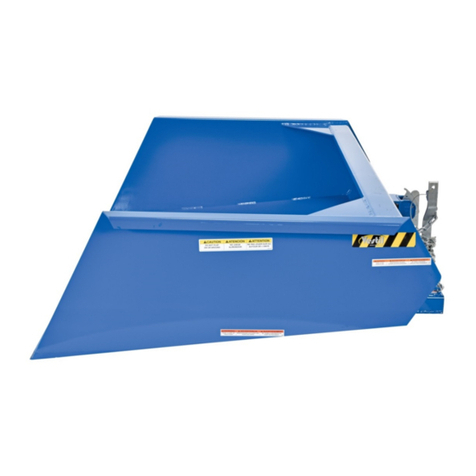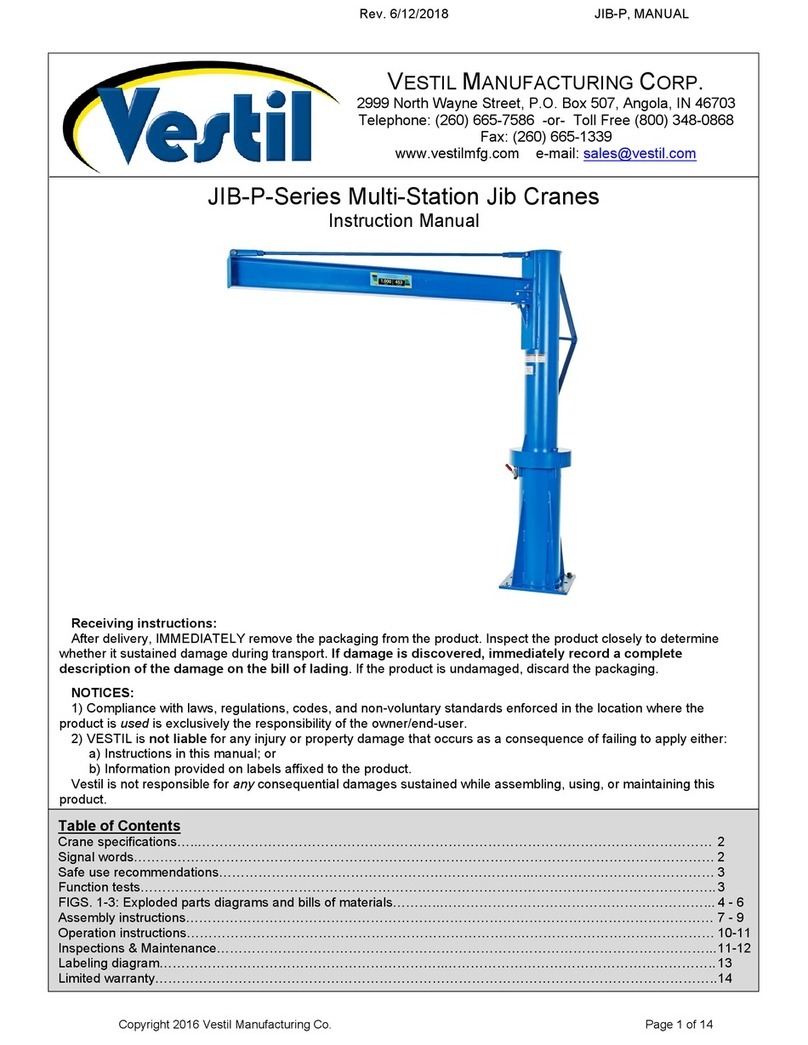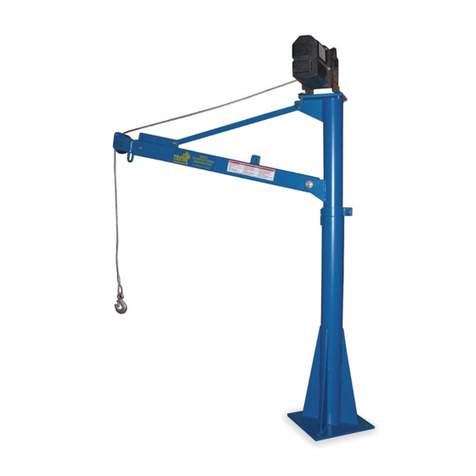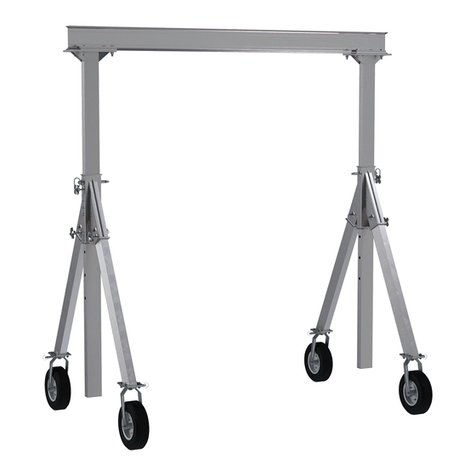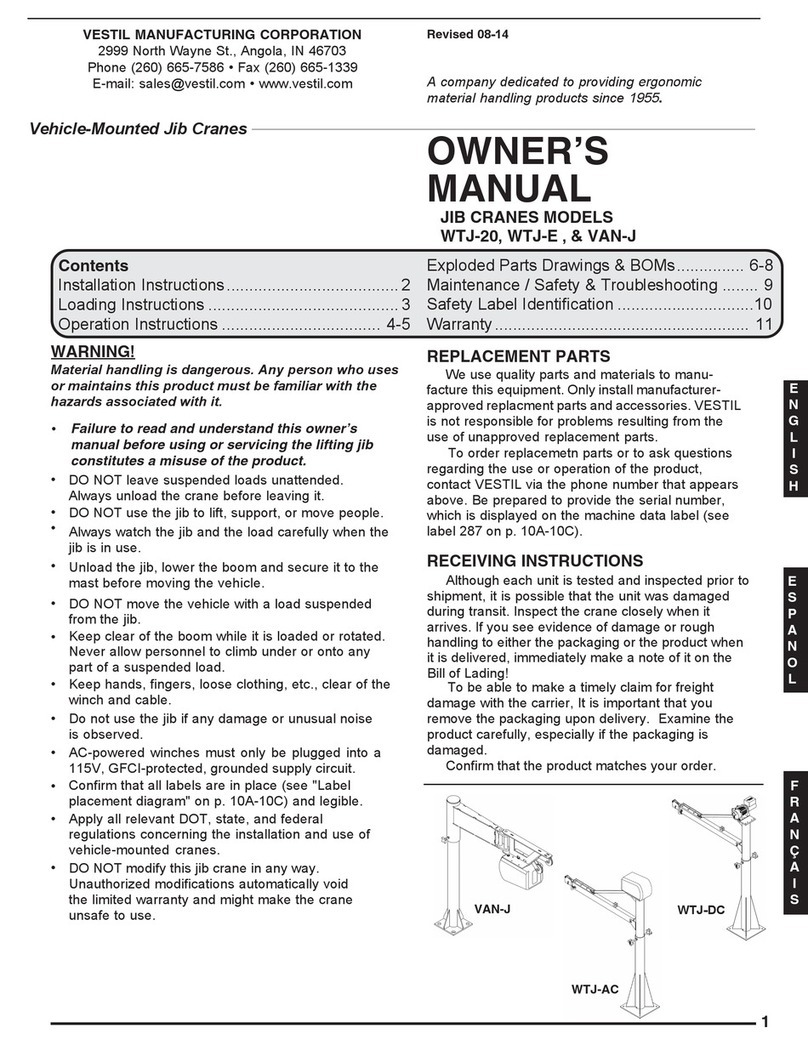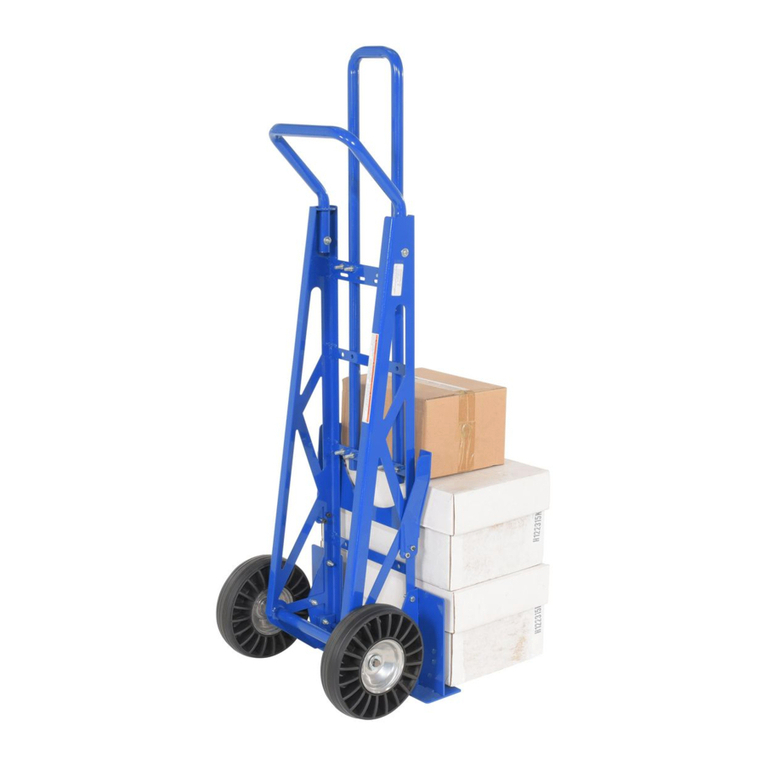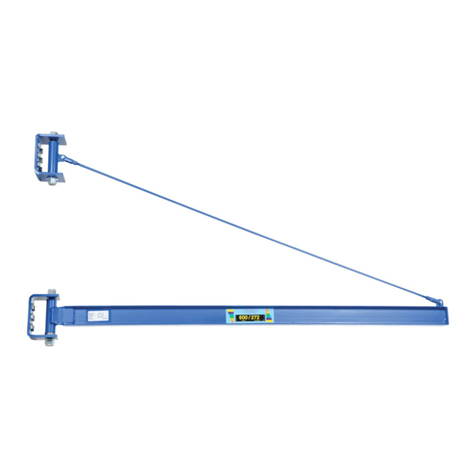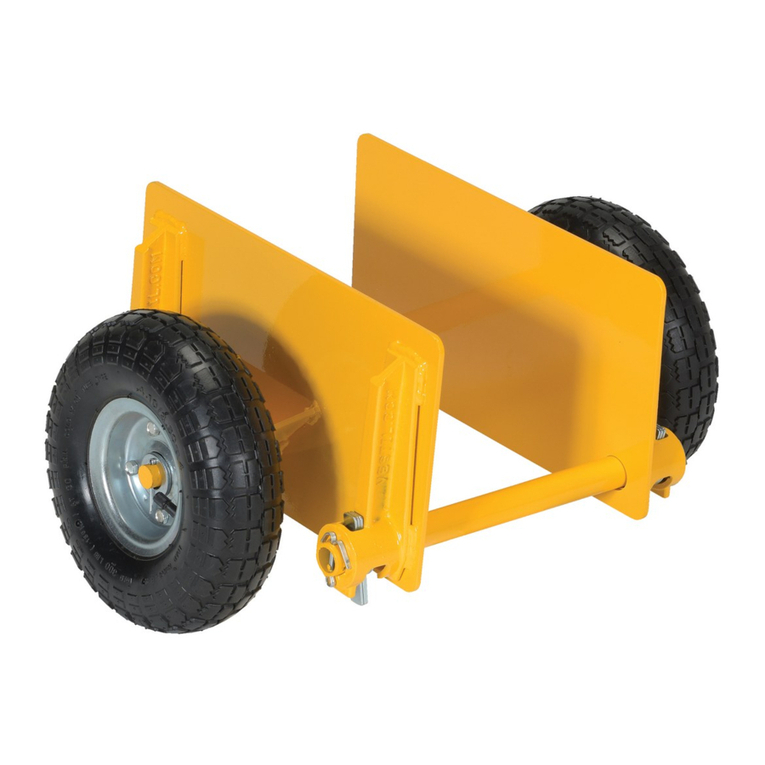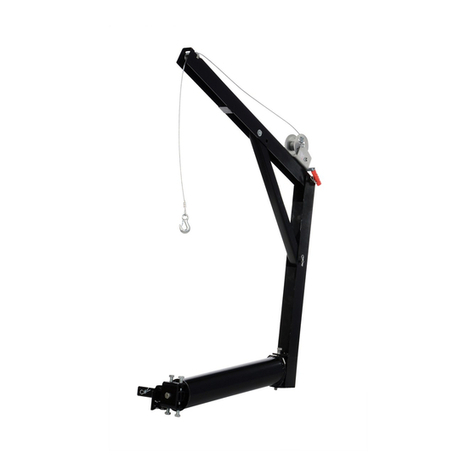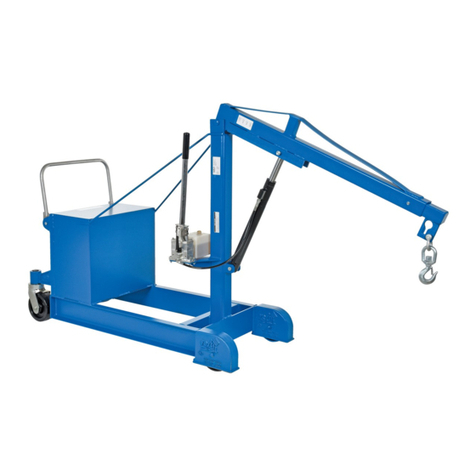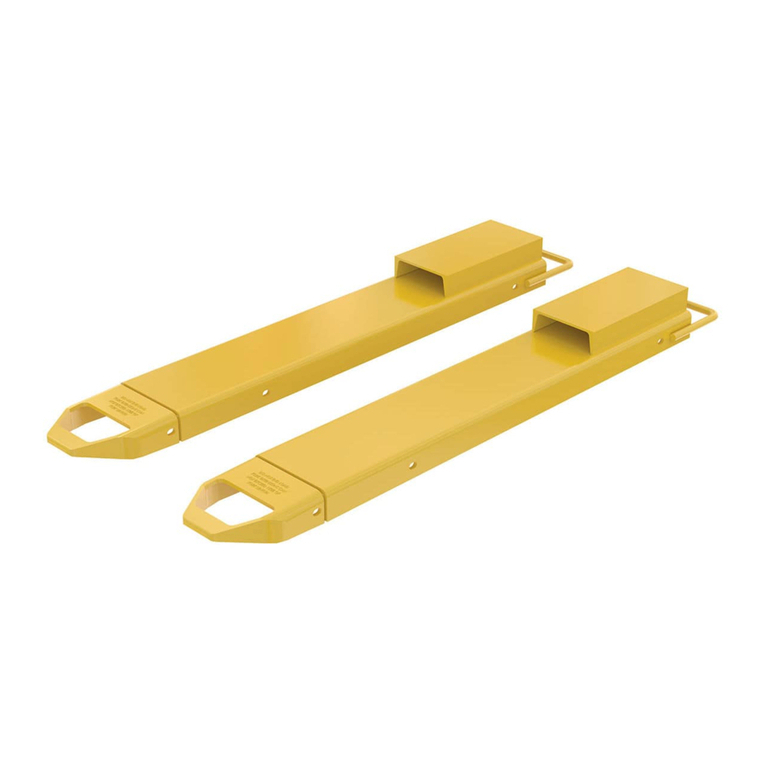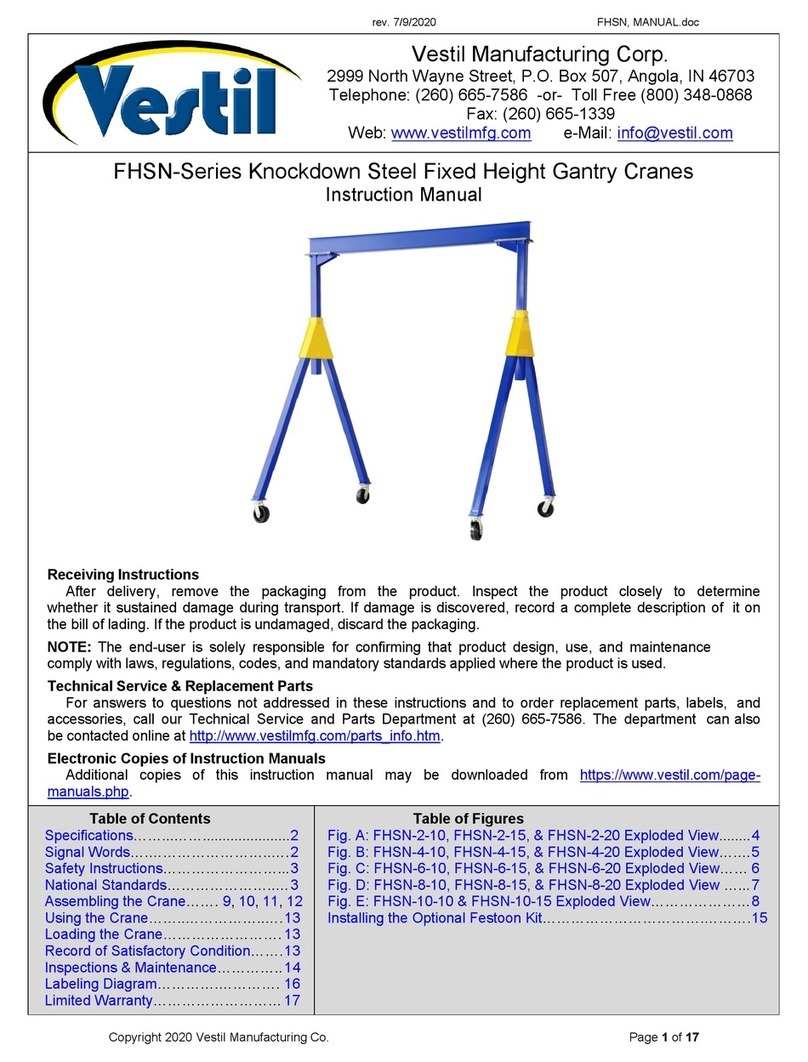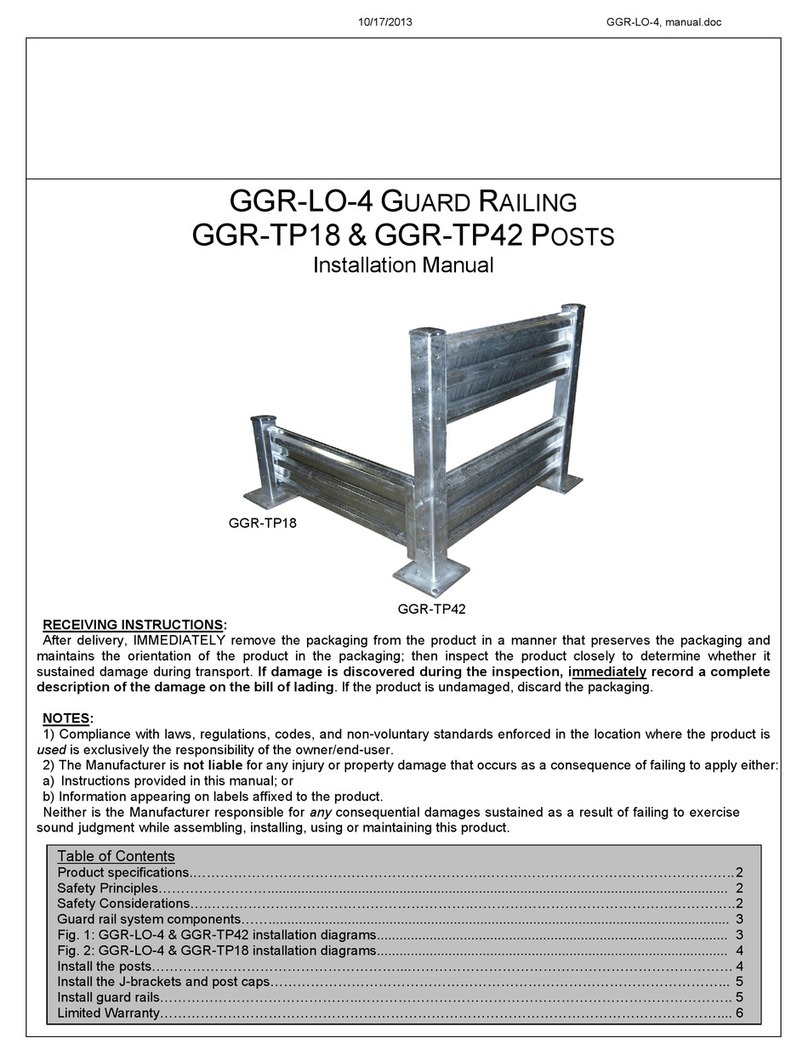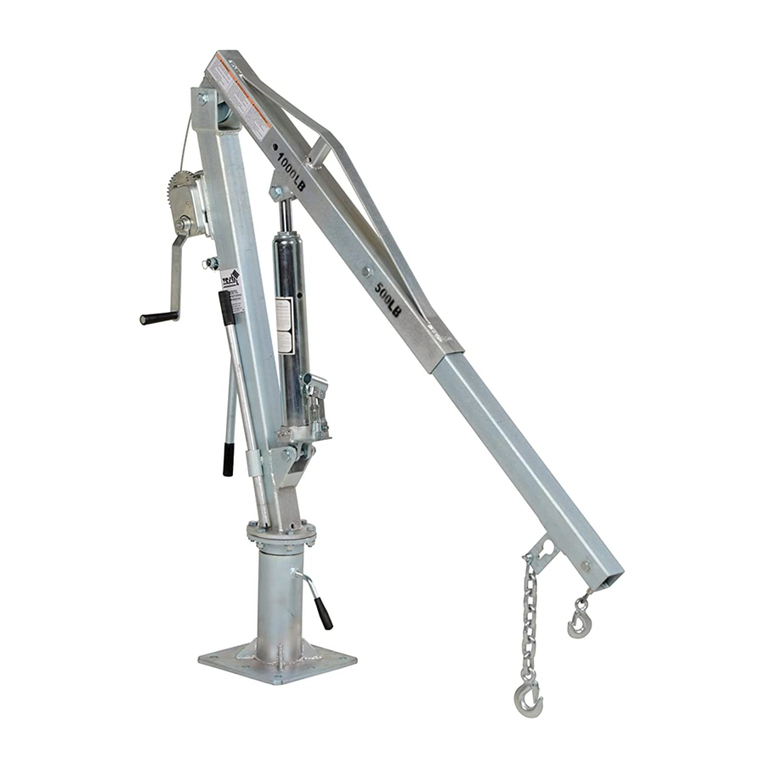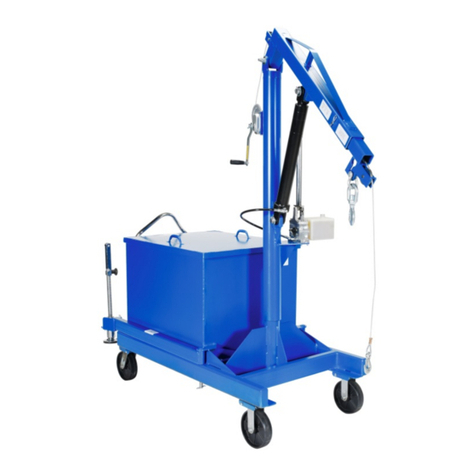
TABLE OF CONTENTS Rev. 4/22/2022 CBFC, MANUAL
TABLE OF CONTENTS Copyright 2022 Vestil Manufacturing Co. Page 10 of 12
1) Hydraulic system: Check all fittings, couplers, and the oil tank for oil leaks and other damage.
Also check the hose for cuts, kinks, leaks, or other damage.
2) Frame elements, cylinder brackets (connection points of cylinder to the frame), & booms (inner
and outer): Examine each item for damage, deformation, and rust and corrosion.
3) Cylinder and pump (part of the MPU): Raise and lower the boom. Listen for unusual noise;
watch the cylinder to confirm that it extends and retracts smoothly (does not bind). Check
cylinder seals for leaks.
4) Load hook and shackle: Thoroughly examine the load hook, shackle, and shackle pin for
significant wear, warps, bends or cracks. Make sure that the shackle pin is tight. Confirm that
the safety latch (of the hook) operates correctly. Also inspect the shackle bracket. The bracket
should be square and rigid and lack cracks and significant bends. The pin hole (for the shackle
pin) should not be elongated.
(B) Inspect the following at least ONCE PER MONTH:
1) Oil level: Lower the boom completely. Oil should be within ¾in. of the top of the reservoir with
the boom in the fully lowered position. See YEARLY INSPECTION below for the hydraulic fluid
specifications.]
2) Hoses:Check for cuts, kinks, and other damage. Confirm that the fittings at the ends of the
hose are firmly connected to the pump and to the cylinder.
3) Hardware: Check the integrity of all nuts, bolts, and pins. Replace any item that is damaged.
4) Casters: Move the crane and determine whether any caster is loose, significantly worn, or
damaged. Remove any material stuck to the surface of the casters.
5) Crane overall: Listen for unusual noises and watch for abnormal movement while elevating and
lowering the boom. The frame should be square and rigid. Examine welds. Make sure all welds
are intact and are free of rust and corrosion.
6) Labels: Check all labels applied to the product. The crane must be labeled as shown in the
LABELING DIAGRAM on p. 11.
(C) Yearly inspection
In addition to BEFORE EACH USE and MONTHLY inspections, check the hydraulic fluid at least once
per year. Change the oil if it darkens, becomes gritty, or turns a milky color (indicating the presence of
water). Replace the hydraulic fluid with anti-wear hydraulic oil of viscosity grade 150 SUS at 100°F, (ISO
32 at 40°C), for example, AW 32 or HO 150 hydraulic oil, or a non-synthetic transmission fluid. You may
use a synthetic transmission fluid if you flush the system with the synthetic fluid before filling the reservoir.
TROUBLESHOOTING
Refer to the appropriate EXPLODED VIEW on page 3 or 6. Also refer to MPU-DC GEN2 owner’s manual.
extend when I
press the UP
control button
a. Too much weight applied
(load exceeds capacity).
b. Too little oil in hydraulic
system.
c. Pinched hydraulic hose.
d. Battery voltage too low.
a. Remove enough of load that weight of
load is within capacity.
b. Add oil until level is within one inch of top
of tank.
c. Correct as appropriate.
only when
unloaded.
h. Debris on seat of inlet check
valve.
j. Debris on seat of relief valve.
g. Remove air from the pump. See Air
Purging Procedure on p. 9.
h. Remove inlet check valve and clean
debris from valve seat (the bottom of the
cavity in pump body that valve fits into).
j. Remove relief valve and clean debris from
but lowers on its
k. Outlet check valve stuck in
open position.
k. Remove, disassemble, clean (with mineral
spirits or kerosene), reassemble and
reinstall outlet check valve assemblies.
5. Have to keep
pressing UP
l. Outlet check valve allowing oil
to return to pump chamber.
l. Remove both outlet check valves. Clean
valves. Score bottom of chamber for ball
